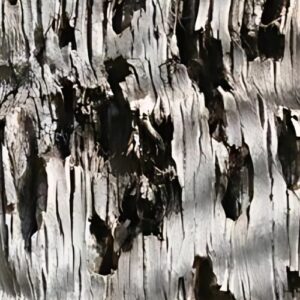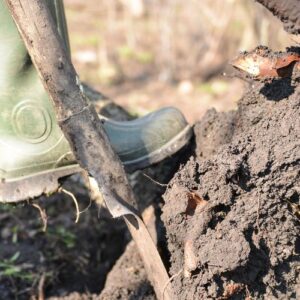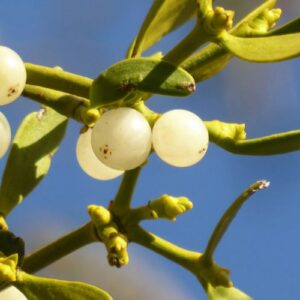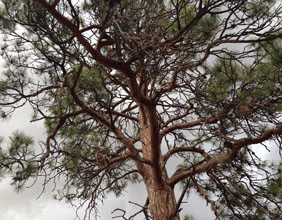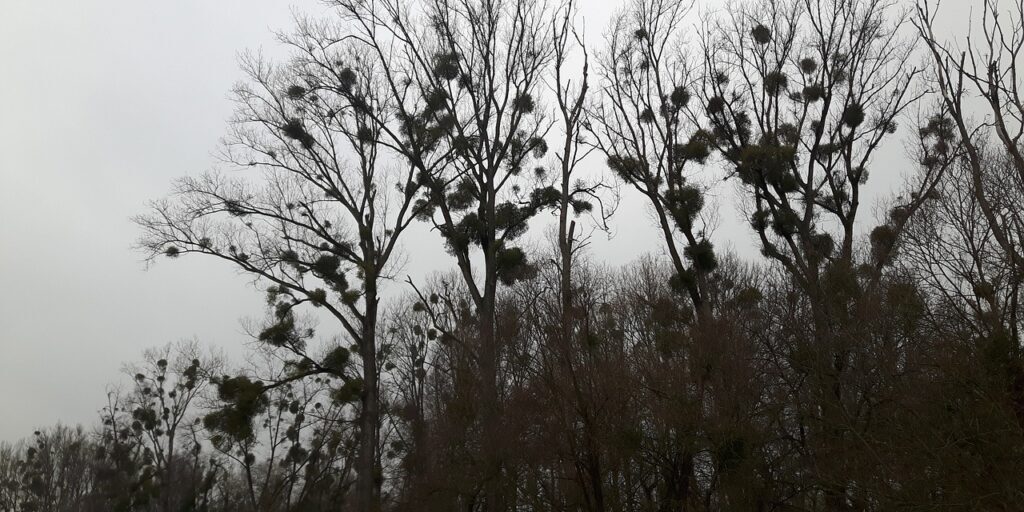
Some tree issues have unusual names that don’t seem to have anything to do with their name. But that’s not the case with witches’ broom – oftentimes, this deformity on trees actually looks like a broom.
Witches’ broom can pop up on trees (and some shrubs and plants) for a variety of reasons. In this article, we cover how to spot witches broom, what trees in our area are likely to have it, what causes it, how it affects your trees, and what you can do.
What is Witches’ Broom?
Witches broom is an abnormality that can appear on many kinds of trees or woody plants. It occurs when many small branches start growing in the same direction, creating a dense, sometimes circular, mass of branches and leaves or needles.
What to Look For
If you notice branches that are close together and seem to be growing in the same direction, it might be a witches’ broom.
Why is it called a witches’ broom?
Brooms in trees were once thought to be either hiding places for witches or the brooms that they used to fly around. So yes, they are named after actual witches’ brooms. The name has stuck over the years.
Causes of Witches’ Broom in Trees
There are many causes for witches’ broom on trees and plants, and it varies by the type of tree. The reason for this is that witches’ broom is a symptom, rather than a disease in and of itself. Much like our bodies tell us that something is wrong when we have a fever, witches’ broom is a symptom of something that has caused the tree stress.
Those causes can include:
- Fungal infections
- A virus carried by mites
- Aphids or other pests
- A broken branch or improper pruning cut
- Genetic mutations
- Changes in the environment
- Mistletoe
Blue Palo Verde Witches’ Broom
The most common type of witches’ broom seen in the Phoenix area is found in blue palo verde trees (Parkinsonia florida). It was recently discovered that the witches’ broom on palo verde is the result of a plant virus, brought by mites so tiny that they cannot be seen by the naked eye.
Witches’ broom is so common on blue palo verde trees that you may not even realize that most trees have it. It became very widespread in Arizona in the 1990s and is now even being spotted in young nursery trees. Some trees can be completely covered with witches’ broom, with very few “normal” branches remaining.
Other Trees Affected by Witches’ Broom
Though not as common, witches’ broom has also been seen on:
- Arizona ash trees,
- desert willows,
- olive trees,
- red plums,
- pine trees, and
- other types of ash.
Witches’ Broom on Rose Plants
Witches’ broom can also affect some plants and shrubs, as well as trees. Roses can suffer from a type of witches’ broom known as “rose rosette disease,” which is fatal to the plant. Also spread by mites, the recommendation is to remove any and all parts of the infected rose plant and dispose of them in a sealed bag (to ensure the mites don’t spread).
What to Do if Your Tree Has Witches’ Broom
Right now, there is no cure for witches’ broom. You may choose to have the witches’ broom pruned out of your trees, but it will probably grow back. With blue palo verde trees, you may need to treat for the mites that carry the virus to the tree as well.
If the witches’ broom is located on a lower branch that you can safely prune yourself, remember to use proper pruning cuts and to make your cut in healthy wood (before the affected part of the branch).
To prevent spreading the virus, clean your tools with rubbing alcohol after pruning the witches’ broom out of your tree. If you don’t do this step, you risk infecting other branches on the same tree or spreading it to other trees or plants.
Most witches’ broom is up in the crown of a mature tree, so contact us to remove the affected portions. We have the training and equipment to deal with witches’ broom safely.
Other Options for Witches’ Broom in Trees
Some property owners choose to leave the infected tree alone, rather than constantly prune out the sections with witches’ broom. This is especially true if there is more than one part of the tree that’s affected or if removing the witches’ broom would remove more than 40% of a tree’s canopy.
Blue palo verde trees with witches’ broom have been known to live 30 years or longer while infected. So while you may not be able to completely remove the symptom, the virus may not harm or kill your trees for many years.
There is no way to prevent witches’ broom at this time. However, you may want to plant a different variety of palo verde that is less likely to suffer from witches’ broom (although no tree is completely immune). Good options include:
- foothills palo verde,
- Mexican palo verde,
- Argenine palo brea, or
- Sonoran palo brea.
Does your tree have witches’ broom?
If you’re not sure, contact Titan Tree Care for an assessment of your tree. We can tell you if your tree has witches’ broom, and if it is damaging your tree or is just an eyesore. We can also let you know if it’s possible to safely prune the witches’ broom from your trees.
More Articles Like This

Titan Tree Care is a full-service tree care company located in Anthem, AZ and serving all of North Phoenix. We offer a wide range of services to meet your tree care needs, including tree and palm trimming, tree pruning, tree removal, stump grinding, and more. We also offer insect or disease treatments and fertilization services. We are dedicated to providing high-quality, safe, and effective tree care services to our customers and work hard to ensure that your trees are healthy and look their best.




